
Gotham's favorite son was introduced to the world more than eight decades ago in the pages of Detective Comics #27. The continuing adventures of a little boy who witnessed his parents', Dr. Thomas and Martha Wayne, murders and went on to wage war against the criminals slowly destroying his hometown have thrilled multiple generations and millions of readers, television watchers and moviegoers. Debuting in May of 1939, one year after Superman entered the comicsphere, the Caped Crusader has since eclipsed even the world's first superhero in popularity. His self-titled comics series premiered the following year. Writer Bill Finger and artist Bob Kane are responsible for the creation of the billionaire-turned-vigilante originally known as "the Bat-Man".
Technically a criminal, Bruce Wayne, the man behind the mask, is an anti-hero, notable for his lack of any superpowers. Instead, Wayne, in his guise as Batman, uses his considerable wealth, hand-to-hand combat prowess, genius-level intellect, finely-tuned deductive-reasoning skills, stealth and terror tactics to discourage (other people's) criminality in his hometown of Gotham City. Wayne supplements his natural gifts, wealth and extensive training in various fields with specialized equipment. He typically dons dark-colored Kevlar and Nomex body armor, rendering him largely protected from conventional small-arms fire, radiation, chemical attacks and fire. Nearly all of his "bat-suits" include a cape and cowl with "bat ears" that conceals most of his face. Batman travels in customized vehicles, including: a modified bomb and bullet-proof car with various built-in weapons; a specialized motorcycle; and a small jet, also equipped with weapons. He also utilizes a variety of gadgets, many of which are designed for concealment and escape -- all painted black. All of these vehicles and equipment are housed in a concealed and expansive cave located on property personally owned by Wayne, which he uses as a base of operations.
Reminiscent of, and inspired by, Mexican character Zorro, created in 1919, Wayne cultivates an image of an affluent playboy by day while fighting crime as a black-clad, masked vigilante by night. Batman's master sleuthing skills were inspired by Sherlock Holmes, Dick Tracy and the Shadow. The Bat-Man initially injured and killed criminals with barely a second thought. But eventually, he underwent a personality change -- due to Detective Comics editor Whitney Ellsworth's edict that the character not kill or use firearms.
The few people who are aware of Batman's true identity include: his longtime Wayne family butler, Alfred Pennyworth; Bruce Wayne's business manager Lucius Fox; terrorist Ra's al Ghul; and the fiercely intelligent muscle-bound villain, Bane.
The Dark Knight Returns
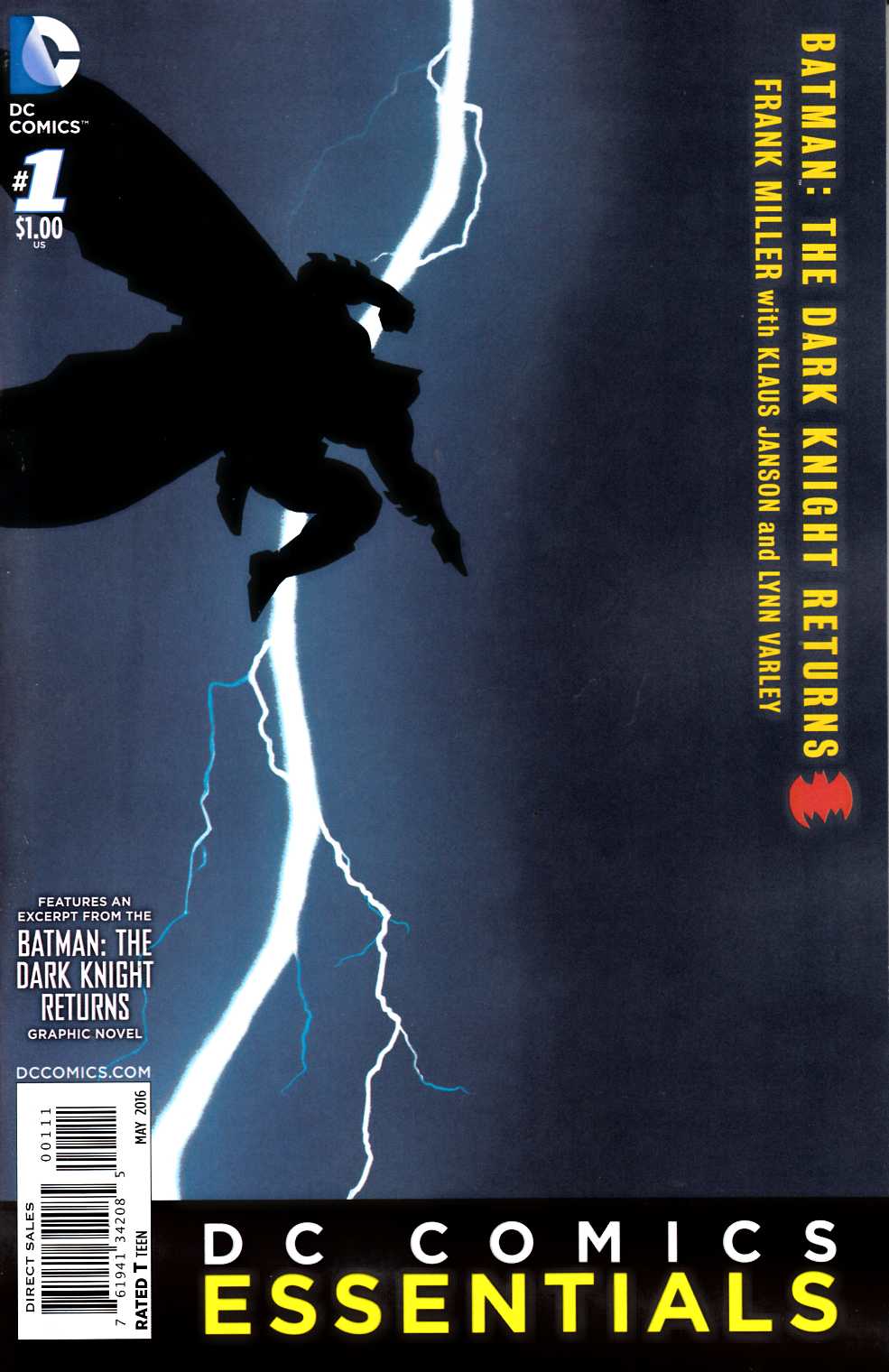
In 1986, illustrator and writer Frank Miller, like his predecessors Dennis O'Neil and Steve Englehart, cast the Batman in a decidedly grittier light than the campy live-action Batman television series of the 1960s. Contrary to popular misconception, the tone of this "new" take on the World's Greatest Detective wasn't radical at all but merely returned the character to his original early 1940s aesthetic. The Dark Knight Returns, which was merely a limited series that ran from February to June of 1986, served to reinvigorate sales, which had flagged by 1964 and again in 1968 following a brief resurgence.
In a future Gotham besieged by a roving gang called The Mutants, a 55-year-old Bruce Wayne ends a decade-long hermitage and retirement from vigilantism and gets back to work cleaning up the streets -- but in a decidedly more brutal fashion than before. After stopping an armed robbery, Wayne discovers that the thieves are in the employ of a seemingly-reformed Harvey Dent, who'd undergone extensive reconstructive surgery (financed by Wayne) to restore his looks after a disfiguring incident damaged his psyche so badly that he eschewed his career as a district attorney and embarked on a life of crime. When he unravels Dent's greater plan, Wayne realizes that the former prosecutor has completely succumbed to his Two-Face identity.
Following his victory over The Mutants' shot-caller in single combat, many of the other gang members become vigilantes and adopt the name the Sons of Batman. However, the Joker, inspired by Batman's return, resumes his life of crime, murdering several Gothamites along the way. During a violent confrontation with the Bat, Joker commits suicide in order to frame the former for murder. Recently retired police commissioner James Gordon's successor, Ellen Yindel, who'd previously declared Batman a public menace, designates him a fugitive from justice and dedicates herself to putting him away.
Taking issue with his methods, President Ronald Reagan tasks Superman with permanently ending the Batman's career -- by any means necessary. But first, the Last Son of Krypton is tasked with quelling a Soviet attack that threatens to ignite WWIII. During the mission, the blast from a nuclear warhead detonation severely injures Superman.
Unafraid to take on the usually invincible alien, Bruce constructs a battle suit and kryptonite weapons and engages a reluctant Man of Steel in mortal combat. Because Superman's still recuperating from the nuclear blast, Batman seems to stand a chance at surviving the confrontation. Wayne has also given his ally, expert archer Oliver Queen, an arrow with a kryptonite tip, which the latter uses to further weaken the Man of Steel. Though the Bat suffers a seemingly fatal heart attack during the encounter and is subsequently buried, Superman hears his heartbeat inside the coffin and, realizing that Batman faked his death, decides to play along with the ruse.
The enormously influential Dark Knight Returns served as the inspiration for several live-action film adaptations. 1989's Batman features a fight to the death between Batman and the Joker. 2008's The Dark Knight features Batman wannabes reminiscent of the Sons of Batman; the film also features the Caped Crusader being (wrongly) branded a fugitive by Gotham Police for his suspected murder of Two-Face (as a stand-in for the Joker). 2012's The Dark Knight Rises features an older, retired Batman resuming his vigilantism before ultimately faking his death. 2016's Batman v. Superman features an older Bruce Wayne who constructs a specialized suit and kryptonite weapons in order to battle Superman, as well as the latter sustaining injuries from a nuclear blast.
Year One
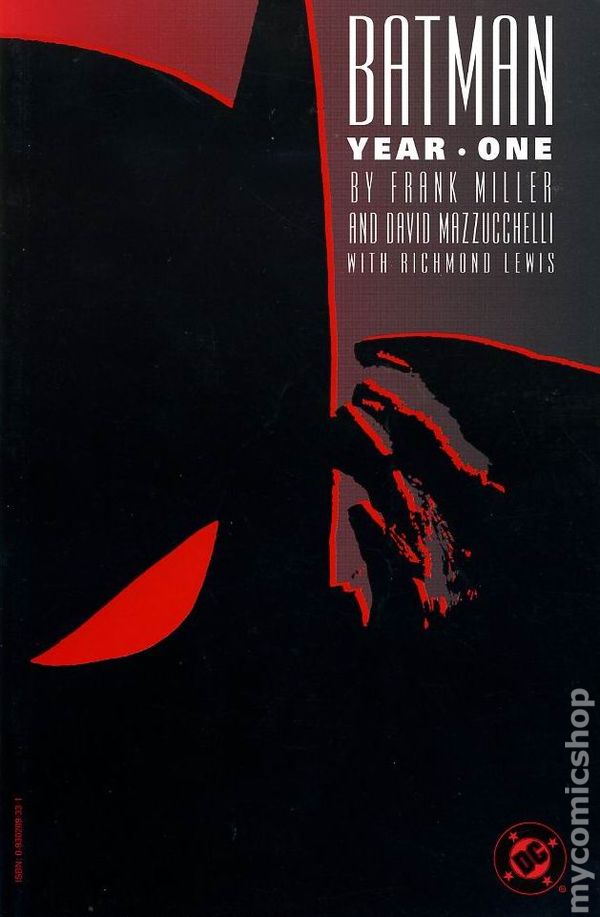
"Year One" served as the primary inspiration for the 2005 live-action reboot Batman Begins. The scene in which Bruce Wayne saves Jim Gordon's son from falling to his death was recreated in that film's 2008 follow-up The Dark Knight.
Knightfall
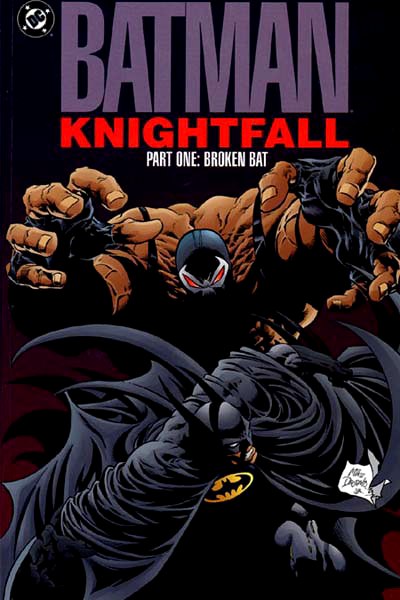

In 1993, the "Knightfall" storyline was published to sterling sales and critical acclaim. The story introduces steroid-infused genius Bane and details his systematic take-down of the Bat-Man -- culminating with the former breaking the latter's back.


The Batman, like fellow icon Superman, has been portrayed by various actors both on television and in cinema. But the best Caped Crusaders remain Michael Keaton, Christian Bale and Ben Affleck.
Michael Keaton brought the Caped Crusader to life in 1989's Batman and 1992's Batman Returns. Keaton defied expectations to provide the quintessential Batman in his prime -- a stoic Batman who instills fear in the criminals who roam the streets of Gotham.
Christian Bale
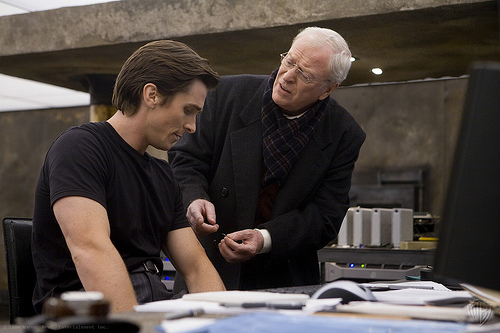

Christian Bale donned the cape in 2005's Batman Begins, 2008's The Dark Knight and 2012's The Dark Knight Returns. But his best contribution to the role came out-of-costume. Bale remains the consummate Bruce Wayne: an obsensibly hedonistic playboy who hides a dark secret.
Despite an initial rash of criticism following his casting, award-winning writer/director Ben Affleck won over both fans and critics with his spot-on turn as a seasoned and cynical Dark Knight in 2016's Batman v. Superman. Affleck portrayed both a menacing (and the most agile) Batman and a hard-bitten, world-weary Bruce Wayne. Affleck reprised the role in 2016's Suicide Squad before suiting up one last time in 2017's Justice League.
The Bat has been featured in 14 live-action feature films of varying quality. The best are Batman Begins, The Dark Knight, The Dark Knight Rises, Suicide Squad, Batman v. Superman and Joker.
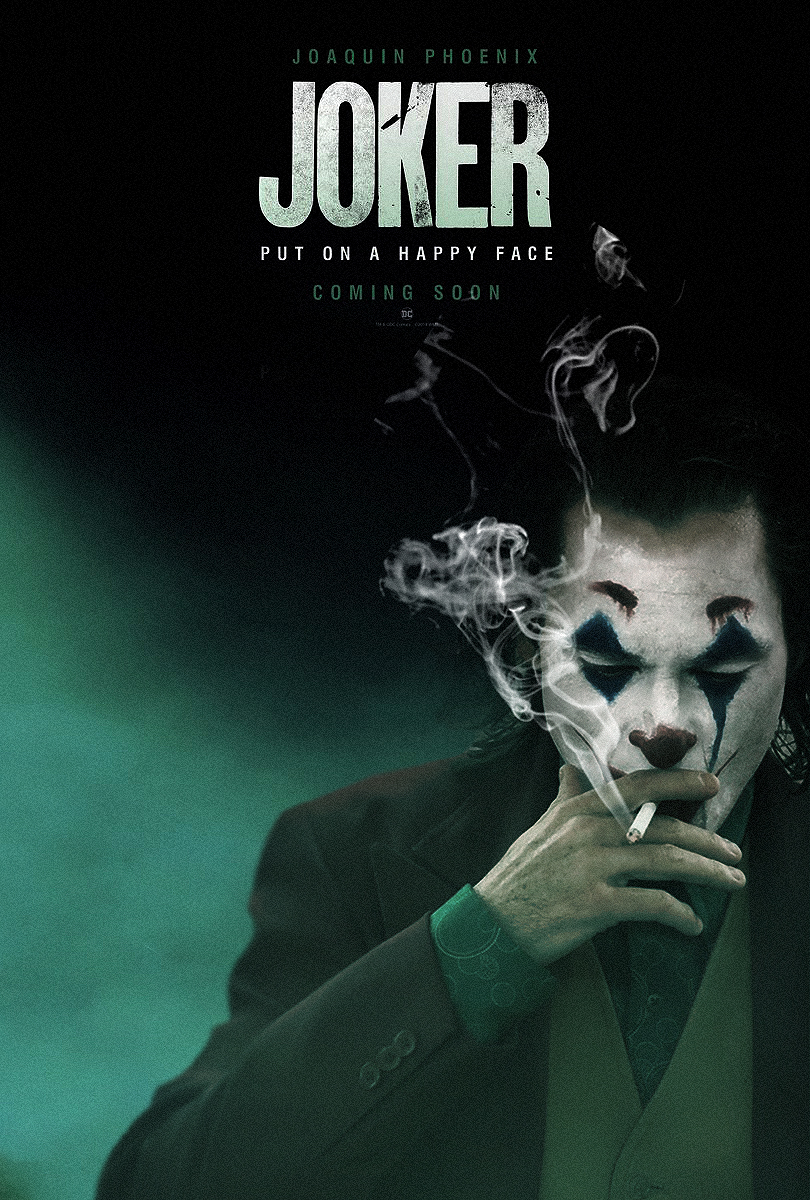
The fully-formed Batman doesn't actually appear in Joker. But a prepubescent Bruce Wayne does -- including his first encounter with the Joker. And at the moment when his fate as a night-stalking crusader is sealed.

Joker

The Batman

Frustratingly close to being a great (as opposed to merely good) movie, The Batman lacks a crucial element. Where the best films about Gotham City's infamous nocturnal vigilante feature either a compelling Bruce Wayne or a great Batman, both identities are lackluster in this one. Fortunately, nearly everything surrounding the title character (with the exception of Selina Kyle) is spectacular -- particularly the villains.
Batman Begins

Deciding to present a more grounded hero who seemed to inhabit the real world, director Christopher Nolan showcased a rookie bat-themed vigilante undergoing on-the-job training. Inspired by the 1987 "Year One" comic book storyline and 1989's "The Man Who Falls", Batman Begins is fairly self-explanatory.
Nolan's down-to-earth approach to the subject matter, which would serve as the template for live-action Batman films going forward, also included villains Ra's al Ghul and the Scarecrow. This much-needed reboot followed a progressive decline in quality of Batman films and gradual return to the camp of the 1960s television series that began with 1992's Batman Returns and culminated in the character's live-action cinematic nadir: 1997's Batman & Robin.
The story explores Bruce Wayne as a fledgling hero, honing his skills and defining his mission as a masked avenger. But we initially see him thousands of miles from Gotham City, training with the League of Shadows, whose leader, Ra's al Gul, inspires him to use terrorism and symbolism in his quest to rid Gotham of violent evildoers. Though Wayne comes to oppose the League's ultra-destructive ideology, he later finds the ninjutsu training he learned during his time at the group's mountain compound essential for waging his war on Gotham crime.
As he learns the ropes of fighting crime outside the law through trial-and-error, he uncovers a plot by psychopharmacologist Dr. Jonathan Crane to cause city-wide panic with his specialized fear toxin. To make matters worse, Ra's al Gul has been working with Crane and makes his way to Gotham in order to utterly destroy it.
For the very first time, Batman was realistic.


The decision to showcase the relatively unknown (to the general public) villains Scarecrow and R'as al Ghul was brilliant, not to mention the previously criminally under-utilized Lucius Fox. And Michael Caine is hands-down the greatest Alfred to ever serve Bruce Wayne a cup of tea.
No matter how much Michael Keaton exceeded expectations, Christian Bale did what Birdman never could -- he made Bruce Wayne as interesting as Batman.
Begins is also gloriously-free of a manic villain, though it ushered in the trend of what eventually became a trilogy of featuring at least two members of the Batman's infamous rogue's gallery in each film.
While Batman Begins is the least entertaining installment of the three, much like Star Wars, it provides a necessary and damned-near too-good-to-be-true foundation for what comes later. Bruce Wayne's ninjutsu training fills in the gaps between spoiled, rich kid and Gotham scourge.
The secret to Begins' success is really simple logic: The premise of comic books is inherently silly, so the tone of a film adaptation should be sincere and serious in order to counter the built-in ridiculousness. Batman Begins had no Jim Carrey, no sidekick in a girly costume, no mutants with pet penguins, no gangsters with novelty gadgets and no Alicia Silverstone. Just darkness, grit, and viable explanations.
For the very first time, Batman was realistic.
The Snyder Cut
In a desperate bid to avert a catastrophic future in which the Superman allies himself with alien invaders, Bruce Wayne embarks on a mission to recruit metahumans to stand against intergalactic warlord Steppenwolf and his parademon minions.
Suicide Squad

Batman's screen time in Suicide Squad is limited but he makes the most out his extended cameo, apprehending both Deadshot and Harley Quinn in dramatic fashion.
Batman v. Superman



While 1989's Batman and the subsequent Dark Knight trilogy were inspired by Frank Miller's landmark The Dark Knight Returns, Batman v. Superman came the closest to capturing the classic tale onscreen. Fearing the potential threat he poses, an older, even more pessimistic Bruce Wayne devises a plan to kill the Superman at all cost.
While detractors of Batman v. Superman often cite what they view as the film's "gloomy" tone as a flaw, the movie, in fact, required its grim atmosphere, as the mere notion of a superhero mash-up is inherently silly. The sincere approach served to mitigate the concept's potential camp factor. Batman v. Superman is notable for returning Batman to his gun-toting and homicidal roots.
The Dark Knight

Realizing that his dramatic brand of terrorism has inspired criminals to follow in his footsteps, Bruce Wayne faces a crisis of conscience and begins to lose faith in his mission. Wayne sees the potential for a normal life and a light at the end of his crime-fighting tunnel in incorruptible district attorney Harvey Dent. But Batman wannabes and an anarchic criminal known only as "the Joker" have followed Wayne's example and have taken to the streets in flashy attire. The Joker, who shows no interest in financial gain, is beyond the Caped Crusader's understanding and his reign of terror seems to be an end unto itself.
By the time the smoke clears, Wayne has compromised his integrity in order to bring an end to the chaos unleashed upon Gotham and has been branded a fugitive by law enforcement.
The Dark Knight's importance cannot be overestimated. I'm not referring to the film's impact on Acadamy Awards policy, wherein it's failure to receive an Oscar nomination resulted in the immediate expansion of the number of Best Picture nominees from five to ten. Knight's most significant contribution to not only comic book films, but to comic books themselves, is the explanation it provides for the existence of Gotham City's many flamboyant supervillains. Though only the Joker, Two-Face and the Scarecrow make their presences known (and never use those names, thankfully), the film suggests that the members of the Caped Crusader's infamous Rogue's Gallery were inspired by one thing: the Batman himself.
The Dark Knight embraces the precedent set by Batman Begins in respecting the fact that some moviegoers and comics readers have brains.
I don't know how the hell Batman Returns scored an 80% on Rotten Tomatoes. What's even more unbelievable is the fact that The Dark Knight Rises features a lot of the same elements of that piece of sh*t (after having sucked all of the silliness out of them). Think about it: They are the only two Batman movies to showcase Catwoman; both also spotlight a villain who attempts a public takeover of Gotham City -- the Penguin ran for mayor while Bane hijacked the town with a nuclear bomb; and each criminal mastermind also makes his home in the Gotham sewer system. It's funny -- Batman Returns, the beginning of the end for Batman movie greatness, inspired the best film ever about the Caped Crusader.
The Dark Knight Rises is so good that it's easier to bitch about the things that bug me than to list everything that went right. Not even "went right". Because this film is so more than you could imagine to ask for. If you'd written a wish list of all of the things that you'd like to see in an action/comic book/fantasy/adventure film in 2011, you'd never have dreamed this up.
It sucked that Bane was cheated out of his origin. The fact that he grew up in prison in the midst of bigger, stronger, vicious psychos is a big part of what made him so impressive. Was that just to surprise people who already knew the story?? You just robbed Peter to pay Paul.
Rises builds on the realism of the first two Dark Knight installments and combines it with an impressive amount of re-watchability. It's possible to make a better comic book film. But in the four years since its release it hasn't happened.
Inspired by the 1993 "Knightfall" storyline, the final chapter of The Dark Knight trilogy explores Batman's greatest trial. Retired for seven years, an older and battered Bruce Wayne is forced to hit the streets again when a stronger, smarter criminal launches a hostile takeover of his beloved Gotham, killing several citizens and hospitalizing the Batman's longtime ally, James Gordon, in the process. A mysterious, hulking criminal-genius known only as Bane shows up in Gotham and promptly empties Bruce Wayne's bank accounts. Not satisfied with merely crippling him financially, Bane faces off against Wayne, whose true identity he'd deduced, in physical combat which culminates in him snapping the latter's back. He also commandeers much of the Bat's equipment and locks him in the brutal prison in which he himself was an inmate before heading back to Gotham to empty its jails (and Blackgate prison), trap the GCPD underground and cordon the city off from the outside world.
As if things weren't bad enough, Wayne's oldest ally and most loyal friend, Alfred Pennyworth, quits in protest over what he views as his employer's suicidal life-mission.








No comments:
Post a Comment